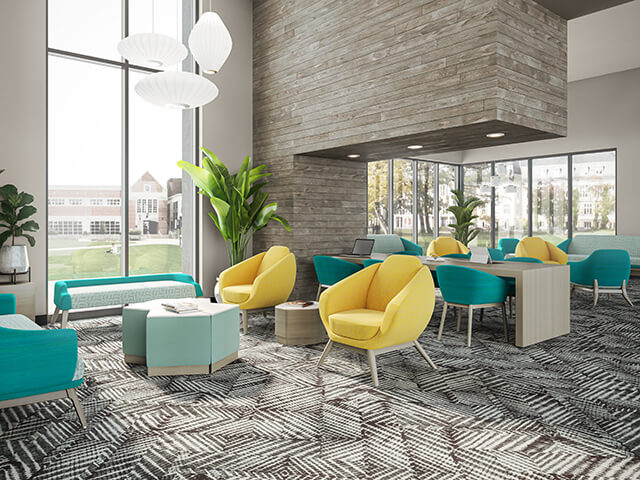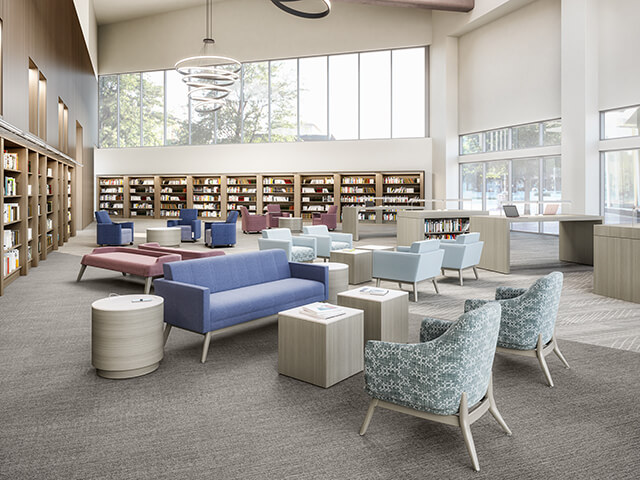Education design should remain as flexible as the courses of study on college campuses. At no time has that proven to be a truer statement than in 2020, the year of the COVID-19 pandemic. Colleges and universities are on alert about frequently touched surfaces, maintaining social distance and frequent cleaning.
1. Wellness and Higher Education Design are a Priority

Calm rooms and wellness gardens are going to be the new normal post COVID. After a year of decisions about in class and distanced learning, to travel home or not to travel home and when to wear masks, self-care has become a focal point of education design. These calm rooms are the places to de-stress and unwind with easily cleaned and very comfortable seating.
2. Flexible Education Design that Supports Student Needs and Preferences

Students are learning differently. The spaces they spend time in on campus should support the preferences that make up their varied learning experiences. Research, a vital aspect of college study, may move completely to an online option. Research takes time. Comfortable and flexible areas that provide study zones of different types featuring furniture that can serve multiple purposes should be considered. Kwalu’s Carisio Ottoman with a solid surface top is a footrest, a small bench, and an individual study table. Two or three together can be configured as the user desires.
3. Designing Campuses for Virtual learning design

A COVID vaccine is coming but until that time, virtual learning is presenting as a top choice on many education levels for safety and convenience. Design that encompasses technology is innovative and important going forward. Furniture, like Kwalu’s Brianza Drum End Table, provide options to plug in and allow students to stay put and stay connected. The solid surface top on this and other occasional tables can be easily and frequently cleaned.
